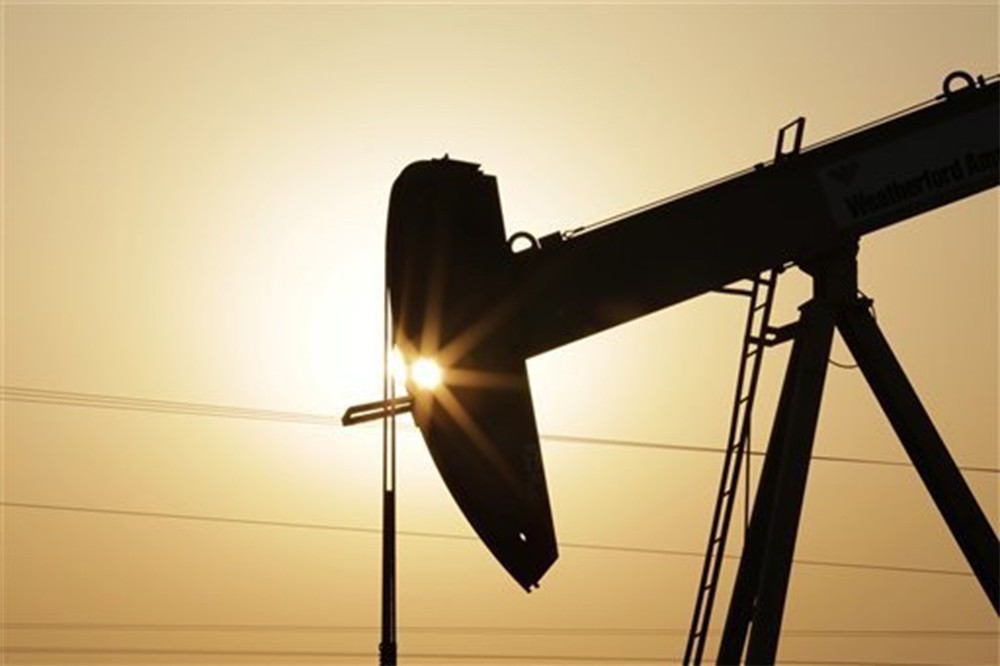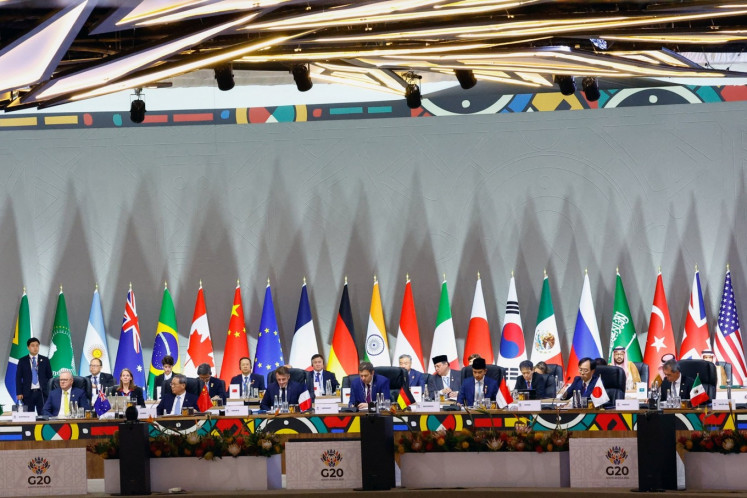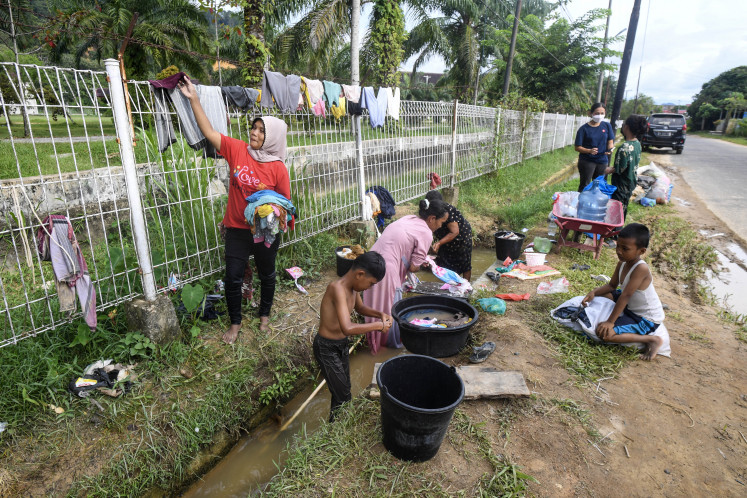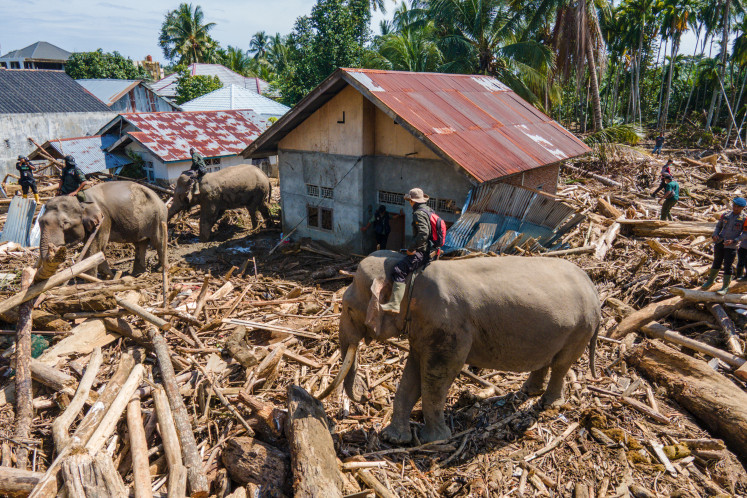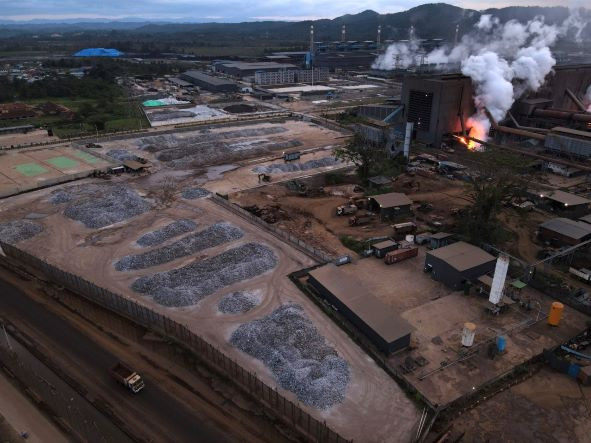Popular Reads
Top Results
Can't find what you're looking for?
View all search resultsPopular Reads
Top Results
Can't find what you're looking for?
View all search resultsWorrying signs still continue in oil and gas sector
Change text size
Gift Premium Articles
to Anyone
T
he following three titles caught my eye during the past two weeks: “Oil, gas sector continues to look bleak”, “Indonesian oil, gas firms rely on foreign loans for exploration” and “Result of 2016 block tender not so encouraging”.
Let’s deal with the first title where it was stated that the future of Indonesia’s oil and gas sector continues to look bleak with the latest estimates showing oil lifting rates plunging by almost half from current levels by 2020, with no new discoveries amid low oil prices.
This is not new news. This has been known about for many years and has been reported in various forms for the past two years at least with the same outcome: nothing. The low oil price has nothing to do with no new discoveries not being made. The cost of exploration has decreased and seismic offshore prices have probably decreased up to 50 percent. In some cases, they are shooting 3D offshore seismic for the same price as 2D seismic was two years ago.
Exploitation has continued without the discovery of new resources to replenish what is being taken out of the ground. So why should we be surprised at the title?
Now let’s deal with the second title; “Indonesian oil, gas firms rely on foreign loans for exploration”. The government should not be relying on international loans and companies to explore and take all of the risk, which is exactly what the second title is saying.
Why would foreign loans be forthcoming for the exploration of resources that may or may not be present in any given area? The article goes on to say that Indonesian lenders have decided that oil exploration projects were not bankable and thus oil contractors currently preferred foreign loans to finance their activities.
Why is this? If Indonesian lenders will not take the risk, why should foreign lenders take the risk? It is obviously a lot easier to obtain loans to build apartments and shopping malls from Indonesian lenders (when will the property bubble burst?).
The article goes on to say, “No national banks are capable of providing US$100 million for oil drilling projects,” adding that foreign financial firms have a larger capacity to disburse loans than the national banks. Given the situation, the government should create more incentives to stimulate the oil and gas industry.
Responding to that, the Interim Energy and Mineral Resources Minister Luhut B. Pandjaitan promised to revise regulations in an effort to encourage contractors to increase oil lifting.
Yes, regulations need to change; although changing regulations are just a part of what needs to be done. Indonesia has clearly let it be known that International companies are not that welcome, but on the other hand, they are seeking finance loans to finance high-risk projects that they are not willing to do themselves.
Which really leads to the title of my last opinion piece “Give them data, and they will come” this would then encourage foreign lenders and possibly Indonesian lenders to be willing to invest based on data that will possibly reduce the risk of drilling dry holes by as much as 70/80 percent compared to the world’s success rate of approximately 10/20 percent.
Exploration costs are high, where the return on invested capital is always a risk for the investor; exploration costs need to be de-risked to the greatest extent possible.
Investment in all exploration has reached alarming lows; only by de-risking exploration can we entice
investors.
The way to de-risk exploration costs and increase the chance of success is to change the way that we carry out the initial exploration work and for the Indonesian government, banks or private entrepreneurs to invest in their own country.
The low oil price has nothing to do with no new discoveries not being made.
Now let’s deal with the third title “Result of 2016 block tender not so encouraging.” IGN Wiratmaja Puja, the Director General of Oil and Gas stated: “The result of the tender is enough to make us worry because there are some working areas that received no interest [from investors].”
According to him, oil and gas blocks in Indonesia actually have a great potential but have generally failed to gain sufficient interest from investors. I was told recently that there is very little if any interest in Indonesia for investment.
This should not be a great surprise to anyone. Major companies working offshore in the deep waters of Maluku, Papua and Sulawesi and the Makassar Strait, Sulawesi lost $1.6 billion from 2009 to 2013.
Are these figures encouraging for International lenders? They are certainly not encouraging to Indonesian lenders.
Exploration is exactly what it says it is exploration, we are looking for something in the hope that we will find something; we can compare this to looking for MH370, a needle in a haystack. We just do not know where the resources are, we just think we know.
To explore for resources offshore, we use seismic vessels which takes time, costs a huge amount of money and does not always provide the results that we are hoping for, as is indicated above in the amount of money that has been lost by some very large companies.
Something has to change, new ways of exploration have to be considered and used, people who make decisions have to make decisions and not be afraid of doing something that is not normal to them.
In 1914 the first patent was registered for seismic exploration methods, which was issued in 1917. In 1921, the world’s first seismic survey was carried out where it was determined that it could detect subsurface structures capable of holding oil. In 1928 the world’s first oil was successfully drilled into a structure located by reflection seismography. People invented, people made a decision, and the rest is history.
It is the time that seismic surveys are supported (not replaced) by innovative tools, tools that can reduce the cost of exploration by as much as 80 percent, reduce the risk by as much as 60 to 80 percent and reduce the time of exploration by months or even years.
Without data you are just another person with an opinion. Only by adopting new technology will Indonesia’s woes be resolved.
________________________________
The writer, a hydrographic surveyor by background, worked in the Royal Navy for 24 years and has been involved in various projects in Indonesia for the past 22 years.

